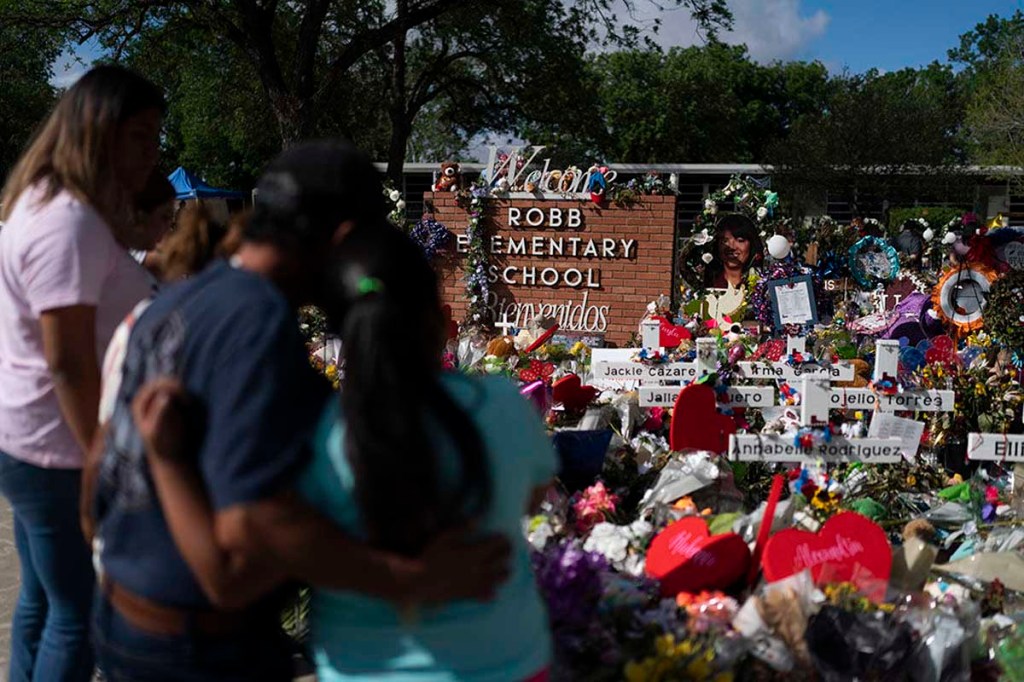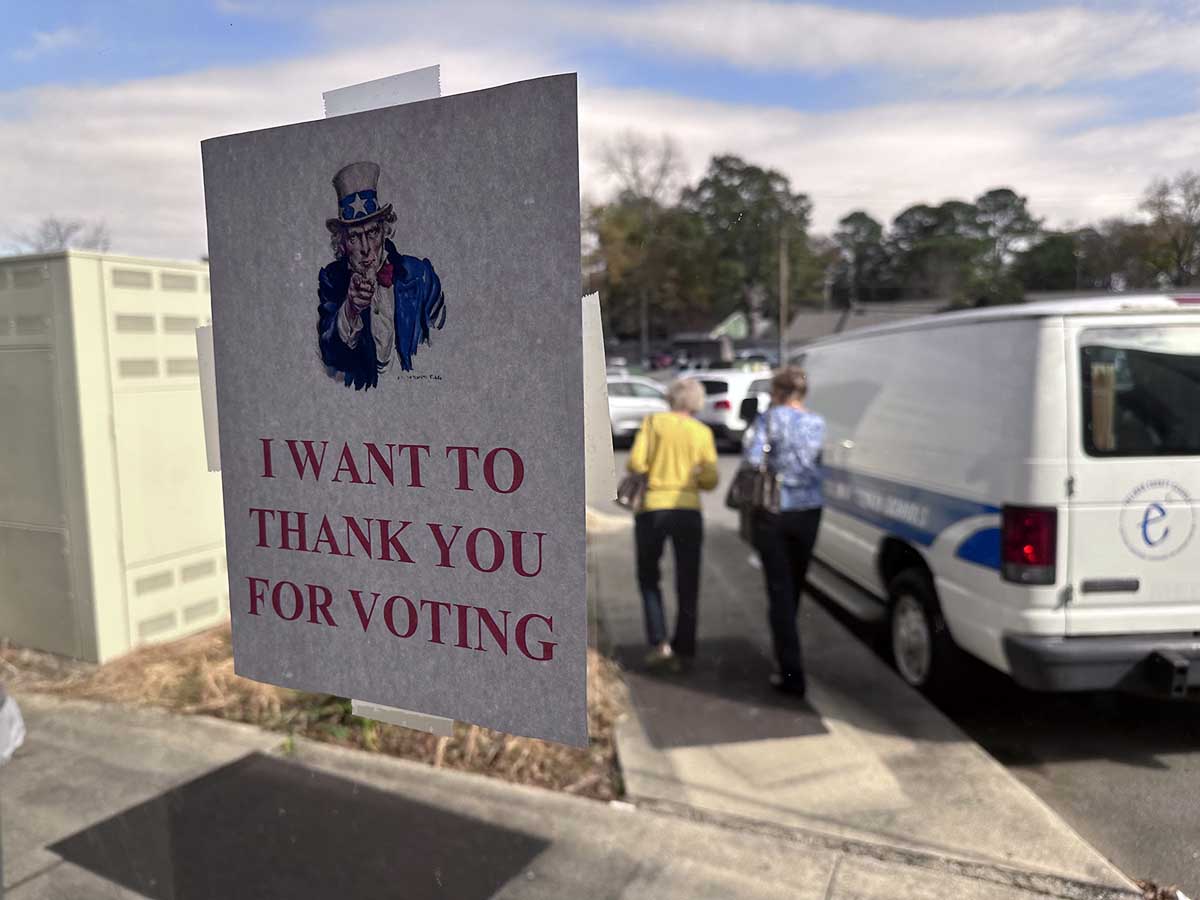‘The root cause’
Published 5:00 am Saturday, June 4, 2022

- People visit a memorial at Robb Elementary School in Uvalde, Texas, Thursday, June 2, 2022, to pay their respects to the victims killed in the school shooting.
In the wake of the 27th school shooting this year, Cullman County administrators, lawmakers and parents will no doubt begin talks to further safety measures in schools. But as the trend of violence persists, some school mental health experts ask … “Are we having the right conversations?”
Security fences, resource officers, nor social media screening software proved to be a deterrent to 18-year-old Salvador Ramos on May 24. and despite regular lockdown drills, security entrances seemed to aide Ramos when he found an exterior door that despite being closed failed to lock. Police response has also come under scrutiny as officers waited to enter the school.
Trending
Mental health specialists for both Cullman City and Cullman County Schools say that while physical security is ultimately good and every possible step should be taken to ensure the safety of students, these are reactive measures, rather than preventative.
Both districts have developed multi-tiered structures of mental health support for their students. As guidance counselors at individual schools identify the need for more specialized resources, they can refer to a team of licensed mental health specialists to further investigate and identify the needs of individual students, and through partnerships with outside mental health facilities, these specialists can further address the needs of students if warranted.
Cullman City Schools Mental Health Specialist Rachel Fondren’s prior experience working with all age ranges, and in the probate courts as a mental health specialist, has led her to believe that by identifying the needs of students at an early age and working with those students can have a “huge impact” in reducing violence in schools.
“These things tend to get labelled as ‘behavioral issues’ … but what happens is that something small starts to snowball. By knowing what to look for, if we can catch these things early, we can stop that from happening,” Fondren says.
Scott Carpenter, who works primarily with high school students in the county school system, said that issues that may manifest as disengagement or temper tantrums at early ages, have the potential to present themselves as depression or aggression at older ages.
“As kids get older it can be more difficult to correct those behaviors because a lot of times they will just shut everyone out, but all that anger has to go somewhere so they just push it inward,” Carpenter said.
Trending
While a number of these issues can be situational — anxiety over an exam, a sick family member, stress about the future — they can fester and lead to a student harming themselves or others. Through behavioral therapy techniques, the specialists say they are able to help students identify and work through their emotions before they lead to intrusive thoughts and suicidal ideations. It’s a problem that Fondren says is “off the charts” at the elementary level.
The key is recognizing behavior and ideations by observing students in distress, having conversations with parents, and consulting counseling services when needed. By identifying the root cause, Fondren says they are able to help students in all aspects or their lives.
“In the past when students would be struggling in math, for example, schools would look and find ways to help that student academically. But we are kind of getting into the base of Maslow’s pyramid (a motivational theory in psychology recognizing human needs) now where if a student is struggling because they don’t feel safe or they are overstimulated, then they aren’t going to do well in math no matter what you do,” Fondren said.
Carpenter, says that students in the alternative schools participate in daily group therapy for this exact reason.
“You’ve got to have those kinds of conversations. You never know where the root cause comes from,” Carpenter says.
The aspect in which Fondren said she has been surprised to see the most positive influence has been from woking with educators directly. With the best course of therapy being unique to each individual student, Fondren says that at times you need to treat children differently in order to not treat them differently.
“It’s not like anyone on staff just doesn’t want to help, but what I will do is watch them in a classroom setting and look for triggers for what is causing certain behaviors and work with educators on how they can correct that. I am a firm believer in that students need to be held accountable. Learning that their actions have consequences is extremely important. But punishment needs to effective. If a student is acting out because they are over-stimulated and you put them in time out… they actually enjoy that whether they know it or not. They are able to calm down, so in a way that punishment becomes almost like a reward to them,” Fondren said.
The Texas elementary school shooter’s mother Adriana Reyes has stated that she was at times worried about her son. Her boyfriend Juan Alvarez, noticed unusual behavior as well stating that Ramos was “a weird one” and “acting aloof as of late.”
Carpenter says educating the families of children has had a tremendous effect. Not only are parents more equipped to recognize warning signs, but also able to more effectively communicate with their children. Adding that often a parent’s desire to openly communicate with their children is negated by their inability to relate to them, which can lead to a sense of disconnection.
Fondren says that this feeling of disconnection is often times amplified by feelings of shame or guilt for the parents part. These feelings can make it easier to shy away from seeking help when needed.
“Parents sometimes have a tendency to want to keep things quiet when they first notice things,” Fondren say. “Sometimes they feel responsible or they are worried about how other people may look at their child or they feel like a diagnosis is some kind of death sentence. But there shouldn’t be any shame. If we can help them find a therapist and they can develop that trust and mitigate that behavior early, then we can help. and honestly for those times when a diagnosis is needed the children don’t really see the limitations that we [as adults] do. They actually seem to use that as a way to advocate for themselves and I’ve seen students go above and beyond anyone’s expectations of them.”
The behavior therapies are even beneficial in the rare occasions a student may be suffering from a condition such as schizophrenia or experiencing regular breaks from reality. Fondren explains that for people who experience regular psychological episodes the brain is damaged at the onset of each episode, and that data has shown that early intervention can lessen the frequency in which they occur and the severity of damage they cause. This Fondren says intervention not only preserves quality of life, but also extends it.
Fondren says that by working with students directly and educating teachers and parents on ways to effectively work through early behavioral issues, she’s seen improvements.
“I’m positive we have been able to prevent a student from harming themselves or someone else when they became older.”
Carpenter agrees.
“If we are able to undo those thought processes, the outcome would be tremendous for keeping students out of dangerous situations, and students wouldn’t grow up with so much anger or disturbed thought processes.”





